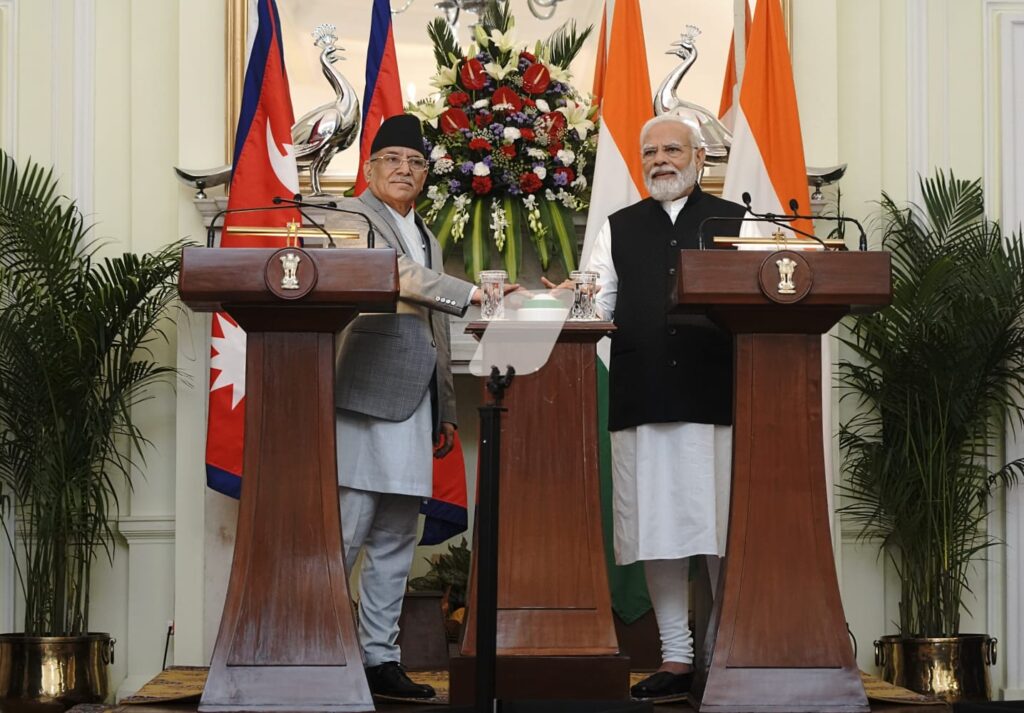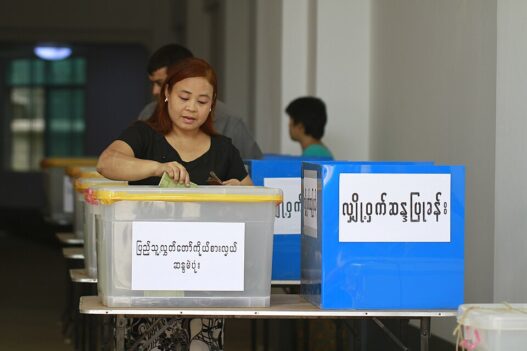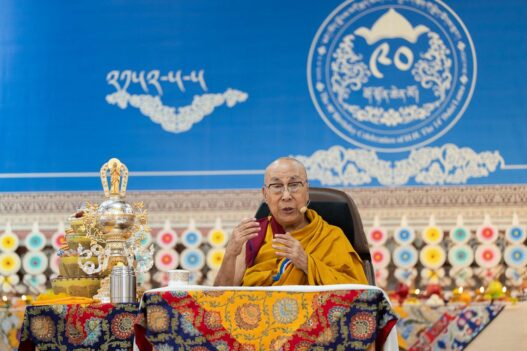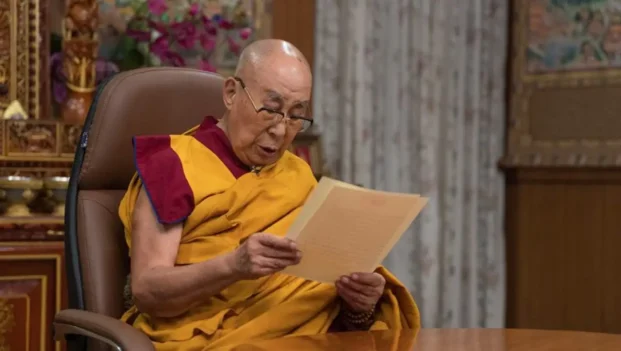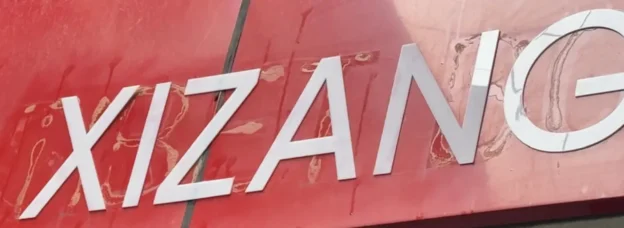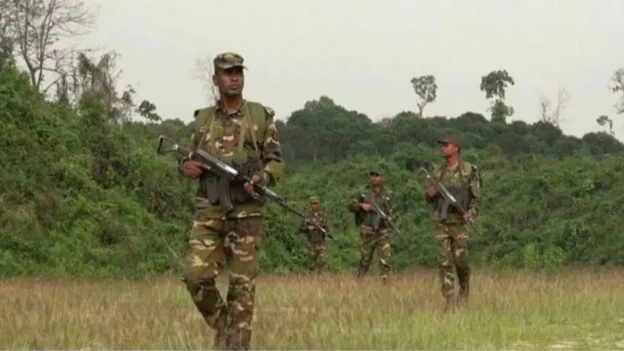India and Nepal share a distinct bond fostered by shared history and geography, close kinship ties, and an interdependent economy. These unique characteristics of the centuries-old partnership were on display during Nepal Prime Minister Pushpa Kamal Dahal Prachanda’s four-day state visit to India from May 31 to June 3.
Embarking on his first bilateral state visit since becoming the Prime Minister of Nepal in December of last year, PM Prachanda held bilateral talks with Prime Minister Narendra Modi. Besides rekindling the centuries-old bond that the two nations share, cooperation in trade and connectivity, power and energy, financial linkages, tourism, and people-to-people connections were also discussed.
India and Nepal also renewed agreements such as the Treaty of Transit providing access to India’s inland waterways for the first time. Opening four new Integrated Check Posts (ICPs) along the Indo-Nepal borders for the facilitation of trade was another significant outcome of the visit.
🇮🇳🇳🇵| Scripting new chapters in bilateral partnership.
— Arindam Bagchi (@MEAIndia) June 1, 2023
PM @narendramodi & PM @cmprachanda of Nepal virtually participated in groundbreaking/inauguration ceremony of various projects, giving boost to cross-border connectivity and flow of people, goods & energy.
Know more about… pic.twitter.com/6aqXha6mDS
Agreement on power trade
One of the key outcomes of the Nepal PM’s four-day state visit was the signing of a long-term power trade agreement under which India will import from Nepal 10,000 MW of power over the next 10 years. The two nations also agreed on expediting measures to encourage mutually-beneficial investments in Nepal’s hydropower generation sector and transmission infrastructure.
The strides taken in the power sector hint at a win-win partnership for both nations that are witnessing sustained economic growth. A consequent increase in the demand for electricity will create pressure on the demand for coal and other fossil fuels. Thus, for both countries, renewable energy is emerging as a viable, long-term solution for ensuring a reliable and affordable supply of energy.
Energy cooperation has been a vital pillar of India-Nepal relations and it was under the aegis of the bilateral power exchange agreement of 1971 that Nepal began importing power from India, thus it was a one-way relationship for Nepal. But, it was in 2021 that Nepal became a power surplus nation and turned to India for the first time as an export market.
Nepal has a huge natural endowment of rivers including Kosi, Gandaki, Mahakali, and Karnali having a hydropower potential of approximately 83,000 MW. Along with 710 MW added by Nepal to its national grid in 2021, the Himalayan nation’s installed hydropower capacity is just 2,190 MW.
Projects under joint development
The India-Nepal Joint Vision Statement on Power Cooperation signed last year, highlighted the unprecedented opportunities for expanding and further strengthening mutually beneficial bilateral cooperation in the power sector and reiterated to work on joint development of power generation projects in Nepal.
The two countries have undertaken various collaborative projects including the US$ 1.3 billion Lower Arun Hydropower Project, Satluj Jal Vidyut Nigam (SJVN) aided 679-MW project between Sankhuwasabha and Bhojpur in eastern Nepal. This is the second mega project undertaken by India after the USD 1.04 billion 900 MW Arun III project.
During Nepal PM Prachanda’s visit, a Project Development Agreement for the development of the 669 MW Lower Arun Hydropower Project was exchanged, and an MoU on the development of the 480 MW Phukot Karnali hydropower project was inked. The groundbreaking of the 400 kV Gorakhpur-Butwal transmission line was also done during the visit.
India also agreed to permit the first trilateral power transaction from Nepal to Bangladesh via India for up to 40 MW of power. This would facilitate regional trade in power and help in meeting the requirement of power in the respective countries thereby moving towards greater energy security in the region.
Challenges and the way forward
Despite the ample opportunities, challenges to cooperation between India and Nepal remain. Water-sharing agreements between India and Nepal have remained contentious. The Koshi Treaty (1954) and the Mahakali Treaty (1996) have in the past witnessed disagreements over water rights, and the question of the management, control, and operation of the barrages.
Nepal is faced with governance and regulatory challenges that hinder the development of the hydropower sector. Frequent changes in the government, an inefficient and politicized bureaucracy, and unclear negotiations lead to risk and uncertainty regarding the return on investment in hydropower.
Electricity sector reforms are at various stages of implementation. India is a pioneer in initiating the reform process, while Nepal’s Electricity Regulatory Commission is a recent creation.
While power exchanges are in effect and fully operational in India, such platforms are yet to be established in Nepal. One of the reasons is the dominant role played by state-owned companies in the generation, transmission, and distribution of electricity in the Himalayan nation. There is a need for an investment climate to ideally enable and encourage private power developers and distribution companies to invest.
It is essential to enhance the scope of the existing bilateral energy trade arrangements between the countries, into a multilateral trade arrangement within a regional framework. But, for such a regional power market to function, the countries in the region would need to harmonize and coordinate their legal-regulatory frameworks, and technical and institutional procedures.
By expanding the scope of the current bilateral energy trade agreements between the nations into a multilateral trade arrangement inside a regional framework, intraregional commerce in electricity in the BBIN region can be promoted.
However, for such a regional power market to operate, the BBIN nations would have to harmonize and coordinate their institutional processes, technological frameworks, and legal and regulatory frameworks.
An efficient enabler for this is a regional framework agreement on electricity trading under the BBIN.

